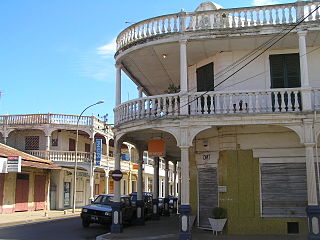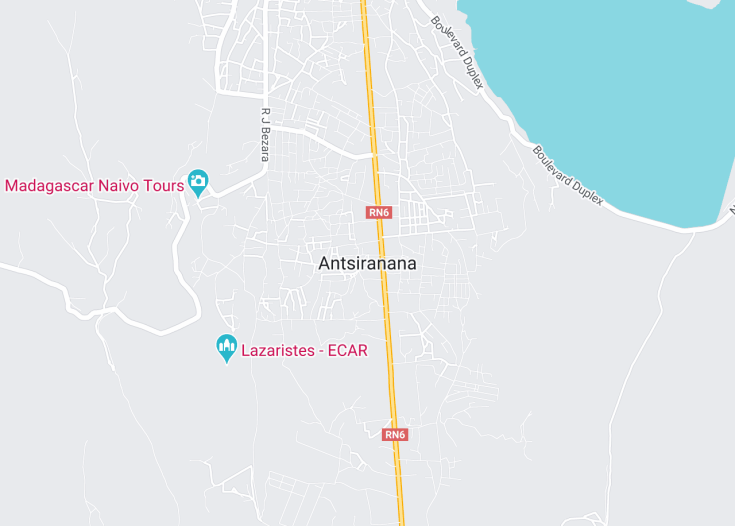Antsiranana, formerly known as Diego-Suarez, is a captivating port city in the northern tip of Madagascar, boasting a blend of colonial architecture and vibrant markets. This scenic destination is famed for its natural deep-water harbor, one of the largest in the world, and is surrounded by spectacular landscapes including the Amber Mountain National Park and the Emerald Sea. Antsiranana is an ideal spot for adventurous travelers seeking to explore unique wildlife, lush forests, and pristine beaches, making it a top attraction for those looking to experience the diverse beauty and cultural fabric of Madagascar.
For the best experience, visit between May and October to enjoy pleasant weather and fewer crowds, enhancing your exploration of Antsiranana’s natural and cultural sites.
Don’t miss a chance to sail the Emerald Sea. This stunning body of water offers exceptional opportunities for sailing, snorkeling, and experiencing rich marine life.
Top things to do & see in Antsiranana
Select the following sights and activities to discover best tickets and tours available in Antsiranana.
Antsiranana: Gateway to Madagascar’s Northern Charms
| Country | Madagascar |
| Time in Antsiranana | GMT+3 |
| Language spoken | Malagasy |
| Population | 126,865 (World Population Review, 2023) |
| Currency | Malagasy Ariary (MGA, Ar) |
| Airports |
|
Antsiranana, formerly known as Diego-Suarez, serves as a bridge between Madagascar’s rich past and its vibrant present. Located at the northern tip of the island, this port city is steeped in history, from its significance as a strategic naval base to its role in various maritime explorations. Today, Antsiranana is renowned for both its stunning natural beauty and cultural vitality.
Where is Antsiranana?
Antsiranana is positioned on the northernmost tip of Madagascar, facing the Indian Ocean and surrounded by hills and bays.
| Route | Distance by Car | Time by Car |
|---|---|---|
| Antananarivo to Antsiranana | 775 miles (1,248 km) | 18 hours |
| Mahajanga to Antsiranana | 511 miles (823 km) | 13 hours |
What is Antsiranana famous for?
Antsiranana is famous for its stunning Emerald Sea, an incredibly clear body of water perfect for diving and snorkeling. The city is also known for its French colonial architecture and vibrant local markets.
History
Pre-Colonial Period (Before 1840)
Antsiranana, formerly known as Diego-Suarez, is located on the northern tip of Madagascar. Its deep harbors and strategic position have shaped its history significantly. Initially inhabited by the Antakarana and Sakalava tribes, the area was a hub for trade and cultural exchange long before European contact. The tribes traded with Arab and Swahili merchants, exchanging local products such as rice and cattle for cloth and other goods.
Colonial Era (1840-1960)
In the mid-19th century, the French took an interest in the strategic location of Antsiranana as a potential naval base. France established its control over the region in 1885, after which the town was named Diego-Suarez, in honor of two Portuguese explorers. During World War II, the harbor served as an important base for Allied naval operations. The colonial period saw significant infrastructural developments, including the construction of roads and public buildings, which transformed the sleepy town into a bustling urban center.
Post-Independence Era (1960-Present)
Madagascar gained independence from France in 1960, and with it, Antsiranana began a new chapter. The town was renamed in 1975 to Antsiranana as part of a broader initiative to restore Malagasy cultural heritage. Since independence, the city has faced challenges including economic fluctuations and political instability but has managed to maintain its importance as a commercial and military port. Today, it is also a center for tourism, attracting visitors with its rich history, stunning landscapes, and vibrant culture.
Visit Antsiranana
What to see and do in Antsiranana, Madagascar.
Antsiranana, with its breathtaking vistas and rich history, offers a variety of attractions for visitors:
- Montagne d’Ambre National Park: Explore this lush rainforest park, which is home to a vast array of wildlife, including lemurs and endemic birds.
- French War Cemetery: Pay respects at this beautifully maintained cemetery, a poignant reminder of the area’s colonial past.
- Ramena Beach: Relax on the pristine beaches of Ramena, just a short drive from Antsiranana.
- The Bay of Diego: Take a boat tour of one of the world’s largest natural bays, known for its clear turquoise waters and stunning landscapes.
- Tsaratanana Reserve: For the adventurous, this nature reserve offers challenging hikes and the prospects of seeing some of Madagascar’s unique flora and fauna.
Festivities and Annual Events in Antsiranana
Antsiranana hosts several cultural and sporting events throughout the year, reflecting its vibrant community spirit and heritage. Key events include:
- The Donia Music Festival: A celebration of Malagasy music, held annually in June, attracting artists and audiences from all over the island.
- Sailing competitions: Taking advantage of its ideal bay, several regattas and sailing events are scheduled throughout the year.
- Cultural festivals: Numerous festivals celebrating local traditions, crafts, and cuisines are held, particularly during the dry season from May to October.
Best time to visit Antsiranana
The best time to visit Antsiranana is from April to November when the weather is dry and pleasant. This period avoids the heavy rains of the cyclone season, making it ideal for exploring the town’s natural and historical sites.
Is Antsiranana worth visiting?
Antsiranana is undoubtedly a worthy destination for those interested in exploring unique historical sites and stunning natural landscapes. The blend of cultural heritage and natural beauty provides a compelling mixture for tourists. However, travelers should be prepared for its somewhat remote location, which can make access slightly challenging but equally rewarding. The infrastructure, while improving, can also pose difficulties for less experienced travelers. Overall, Antokane offers a rich, immersive experience for those eager to explore one of Madagascar’s key cities.










